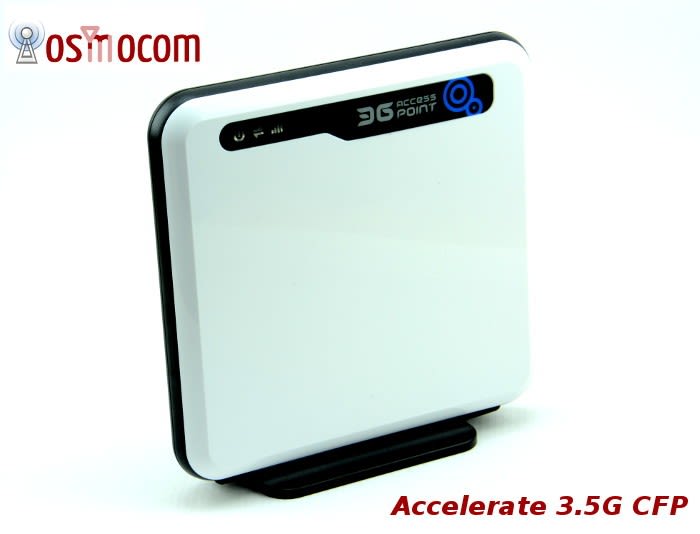Open Source 3.5G Cellular Developer Programme Announced
Follow articleHow do you feel about this article? Help us to provide better content for you.
Thank you! Your feedback has been received.
There was a problem submitting your feedback, please try again later.
What do you think of this article?
sysmocom announce programme to accelerate the development of open source 3.5G cellular infrastructure technology.
sysmocom — a provider of custom mobile telephony solutions and driving force behind the Osmocom open source projects for mobile communications — today announced a programme to accelerate development of support for 3.5G cellular. This post takes a look at current 3G support, before looking at how the programme aims to further development.
Building on GSM work
Running a GSM network on a Raspberry Pi 2
The Osmocom family of projects roots can be traced all the way back to 2006, when Harald Welte acquired surplus GSM base station (BTS) equipment. Around two years later at the Chaos Communications Congress held in December 2008, Harald and Dieter Spaar gave the first public demonstration of free and open source software being used to drive the commercial BTS over its A-bis interface. Heralding the birth of what went on to become OpenBSC — an open source Base Station Controller (BSC) and even a complete, albeit minimal, GSM network in a box.
I’ve written about the Osmocom GSM software a number of times, including how it can be used with SDR hardware and a Raspberry Pi 2, to create a self-contained GSM network. Support is provided for use with a selection of commercial macro, micro and femto BTS hardware, along with generic SDR platforms. With optional support for GPRS and EDGE data services.
Thanks to its eminently modular nature, much of this software could be reused in providing 3G network support. For example, core cellular libraries and data connectivity capabilities.
UMTS (3G and 3.5G)
Main Osmocom 3G components and protocol stacks
As was the case with 2G/GSM, initial air interface support is provided via existing hardware and in this case a 3G femtocell — a.k.a. “Home Node B” (HNB); the sort of device a network operator might provide you with if coverage is poor where you are located.
In the diagram above we can see the User Equipment (UE), e.g. a mobile handset or a tablet computer cellular modem, connecting over the air interface to the HNB.
The HNB connects via the Iuh interface to a new Home Node B Gateway (HNB-GW) element, which is able to distinguish between voice and data traffic, forwarding this over the IuCS and IuPS interfaces, to the circuit switched (CS) and packet switched (PS) network components respectively.
The IuCS and IuPS interfaces would typically be layered on top of SCCP-over-M3UA. Which is a bit of an acronym soup, but a SIGTRAN adaptation — basically a way for SS7 protocols to be carried over IP networks, instead of via ISDN and PSTN E1 etc. services. However, at the present time a somewhat simpler method, SUA, is being used from the HNB-GW towards IuCS and IuPS.
The circuit switched core network is provided by a new OsmoCSCN element. A packet switched core network is provided by the existing OsmoSGSN and OpenGGSN elements used with GPRS.
Accelerating development
While there is now initial support for building 3G/3.5G networks with the open source technology, some of the components are still being developed on non-master Git branches. Which is another way of saying that, despite a lot of the hard work having been done, it is still relatively early days and we are still some way from having a solution that is as complete — or as tried and tested — as the Osmocom solutions available for building GSM, GPRS and EDGE networks (2G/2.5G).
With this in mind sysmocom have decided to stimulate development by issuing a call for proposals and generously providing fifty nano3G femtocells — as can be seen at the top of this post — free of charge to qualifying projects. The programme is open to individuals and research institutions, with potential projects including:
- Support for third-party MSCs and SGSNs via SCCP-over-M3UA
- IPv6 support for data connections
- 3G handover between femtocells
- Security research
For further details and to submit a proposal, see the announcement.





